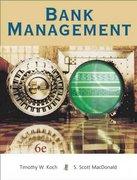



Provide sufficient silut to these attached questions.
Take a simple interlaemporal model of conSumption. The consumer lives for two periods; you can think of these as her working life and her retirement. The consumer earns income when she is young, y, which she does not choose. She chooses to save some amount of her income, 5, and consumes the rest while she is young, cl . Her savings attract the after-tax rate of return, TU t). When she retires, her consumption, :1, will equal her savings and any after-tax return that has accrued. The consumer's utility maximization problem is therefore: max U(c1,c2) =2t::"'r2 +2cy2 st. 9 = c1+s \"1.352 c; = 5(1 +r('l t]]. (it) Let's start by simplifying the problem. Use the constraints to substitute for c1 and c; in the utility function. recasting the consumer's constrained optimization problem in which she chooses c1 and c2 into an unconstrained problem in which she chooses s, as in: msaxms)... (b) The idea is that because income is given, any choice about how much to save is implicitly a choice about how to divide consumption between working life and retirement. So let's determine the consumer's optimal saving decision by differentiating the consumer's utility mction, deriving the consumer's rst-order condition. Don't simplify the expression yet. d_u _. ds _ (c) To check that this is a maximum and not a minimum, differentiate a second time, deriving the consumer's secondorder condition. How can you tell that the solution to the firstorder condition is a maadmum'? ...=o it!) Now go back to your rst-order condition in part (b). Solve for the optimal saving rate, 5. Remember the power rules (i.e., what it means for a power to be negative, and what to do when both sides of an equation have the same power). (e) Looking at your answer to part {d}, what is the consumer's 'marginal propensity to save'? If her savings did not attract a return, what share of her income would she save? Does the aftertax retum raise or lower her marginal propensity to save and why is that, given our discusion of intertemporal consumption in class? (it As we have discussed, the welfare loss due to a tax is related to the behavioral response due to the tax. Derive the effect on the marginal propensity to save of a marginal increase in the capital income tax rate (note you will have to use the quotient rule}. Now differentiate this expression a second time and tell me if this marginal behavioral distortion is increasing or decreasing in the tax rate. Is this consistent with your understanding of deadweight loss? 1. There are two types of job applicants: high productivity [type h} and low pro ductivity [type I]. The proportion of type It applicants is :1. Job applicants can invest in education with the following cost functions: one}: 31.: and c.(e}=e. where e E {1 denotes a level of educational attainment. Education does not affect applicantsT productivity [3:1 for type it and It]; for type 1'}. Each type t applicant has utity funltion over educationwage pairs: wle ift=h, u[e,w}={ \"Ludc ift=l Reservation wages are zero for both types of applicants. There are at least two employers with each receiving prots E: - w from employing a worker of type t at wage to. assume Eh = 2 and Hg = 1. a} Find the competitive equilibrium wage for each type with complete informa tion. b} Find the competitive equilibrium wage when employers could not observe productivity and job applicants could not use signals as a way for informing employers. c} Now suppose that job applicants can signal ability via education. Find the separating equilibrium with employers believing that only applicants with educational attainment E or more have type 31, where E satises 2 E E E 3. Problem 1: Exchange economy There two consumers, A and B, and two goods, X and Y. Consumer A has a preference relation over consumption bundles, which is represented by the following continuous and differentiable utility function: H.4(3'3A: 9A) = 56.4 + 2x/1UA, where 31,4 2 0 is the quantity of good X and 3m 2 0 is the quantity of good Y. Consumer A has an initial endowment EA 2: 0 of good X, but no initial endowment of good Y (i.e., 5,4, = 0). Consumer B has a preference relation over consumption bundles, which is represented by the following continuous and differentiable utility function: Ramsay's) = QWEB + ye, where :33 2 0 is the quantity of good X and ya 2 0 is the quantity of good Y. Consumer B has an initial endowment g > 0 of good Y, but no initial endowment of good X (i.e., 3 = 0). {1) Find the Pareto set for this economy, and illustrate the Pareto set and the initial endowments in an Edgeworth box diagram. Are the initial endowments Pareto optimal? {2) Normalize the price of good Y to 15* = 1. For all possible values of the parameters 33.4 > 0 and 373 > 0, nd the competitive equi- librium price of good X (i.e., px) and the competitive equilibrium allocations. 122 MULTIPLE LINEAR REGRESSION 3.4 Reconsider the National Football League data from Problem 3.1. Fit a model to these data using only x, and x; as the regressors. a. Test for significance of regression. b. Calculate R' and RA.. How do these quantities compare to the values computed for the model in Problem 3.1, which included an additional regressor (x2)? c. Calculate a 95% CI on By. Also find a 95% CI on the mean number of games won by a team when x, = 56.0 and x; = 2100. Compare the lengths of these CIs to the lengths of the corresponding CIs from Problem 3.3. d. What conclusions can you draw from this problem about the consequences of omitting an important regressor from a model














